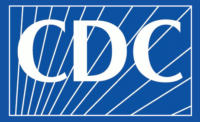Eggs Cause Majority of Salmonella Outbreaks in Europe

Credit: jiangxulei1990 via Unsplash
A recent study has examined the sources and trends of salmonellosis in Europe, where Salmonella is the leading cause of foodborne illness outbreaks. Through an analysis of outbreak data collected by the European Food Safety Authority (EFSA) across 34 European nations in 2015–2019, eggs were found to be the most significant source of salmonellosis outbreaks in Europe.
The study included a total of 1,508 salmonellosis outbreaks, of which 468 could not be linked to a single food source. Eastern Europe experienced the most outbreaks, and 2018 saw the highest number (366) of outbreaks overall.
The study attributed eggs to approximately 33 percent of salmonellosis outbreaks, followed by pork and general meat products at 7 percent and 6 percent, respectively. Although eggs were the most significant source of salmonellosis in all regions, pork was the second most common food source in Northern and Western Europe, and general meat products in Southern and Eastern Europe. Serotype S. Enteritidis was mostly associated with eggs (37 percent), whereas S. Typhimurium and its monophastic variant were mainly attributed to pork (34 percent and 95 percent, respectively).
The study observed a significant increase in the number of outbreaks reported between 2015 and 2019, by an average rate of 5 percent each year. This is largely due to outbreak activity in Eastern Europe, where S. Enteritidis was a growing problem. However, outbreaks caused by S. Enteritidis decreased in Northern and Southern Europe during the same time frame.
The study noted one specific outbreak—a 2016 Polish outbreak that spread across 14 countries—as a possible reason for the inflated numbers regarding S. Enteritidis and Eastern Europe. Additionally, the study acknowledged that the increasing use of whole genome sequencing (WGS) for outbreak detection and source tracing could be a contributing factor in the rise of recorded salmonellosis outbreaks.
Looking for a reprint of this article?
From high-res PDFs to custom plaques, order your copy today!









